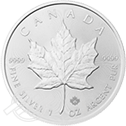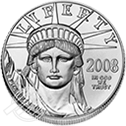How to Find the Best Precious Metals IRA for You
Once you’ve decided a precious metals IRA is right for you, the next step is to decide which precious metals make the most sense in your account.
This educational guide will help you:
- Assess your goals and risk
- Evaluate eligible precious metals options
- Find a custodian
A little understanding can go a long way. We are happy to help you on your journey toward achieving your goals.
Assessing Your Investment Goals and Risk Tolerance
The first step toward successful investing is to understand your goals. You must decide what you want to accomplish, and how you plan to do so.
Making a plan—and sticking to it—will help alleviate anxiety and allow you to be comfortable in your decision making.
Are you risk-accepting or risk-averse?
Risk-accepting investors often adhere to an all-or-nothing mentality. They are willing to lose big in hopes that they’ll win big. No guts, no glory.
This type of mindset often leads to chasing the thrill and short term plays of options investing, forex, or momentum hunting. Short term investors quickly jump in and out of their plays, and typically look for what’s next.
Risk-averse investors look for safety and stability. They accept smaller gains that add up over the long term. Most risk-averse investors don’t want to get in and out of their investments, and are comfortable buying and holding an asset.
Both risk-averse and risk-accepting investors have found precious metals IRAs can help them achieve their goals.
For those who like the thrill of going big, metals in a long-term plan can help offer stability. Because a precious metals IRA is a long-term investment—designed for withdrawal later in life—risk-accepting investors may sleep easier knowing that if all else fails, they’ll still have their Gold IRA, Silver IRA, or precious metals IRA with platinum and palladium.
For those who want less uncertainty, a precious metals IRA may be perfect.
Most who purchase precious metals inside of an IRA practice a set-it-and-forget-it mindset. Because they are not looking for—nor expecting—a quick hit, investors typically store and hold IRA precious metals for long stretches of time.
All investing comes with inherent risks. The best precious metals IRAs help mitigate that risk and can offer a foundation for all other investments to build on.
Evaluating Precious Metal Options
The IRS places a strict list of standards on the types of metals allowed in an IRA.
Coins must meet purity requirements, be newly minted, uncirculated, and come from government mints.
Bars must be from approved manufacturers, and meet the same purity standards as coins.
Scrap metal, jewelry, and historic pieces—such as pirate ship gold—are not allowed in the precious metals IRA.
The eligible precious metals include:
- Gold
- Silver
- Platinum
- Palladium
Each has a unique set of traits and may fulfill different investment objectives.
Gold
Gold is the standard by which all other metals are measured. Treasured throughout history, gold has been valued for its rarity and beauty. Because it is non-corrosive, extremely durable, and still malleable, gold has been the precious metal of choice for the highest denomination of coins, and for some of the world’s finest jewelry.
IRA eligible gold must be 99.5% pure.
Silver
Silver was, at one time, more coveted by ancient Egyptians than gold.
Today, modern societies value silver not only for its beauty, but for its essential use in technology.
Solar panels, televisions, cell phones, computers, and most electronics rely on silver and its conductive properties to function.
Dedicated mines only result in 25% of silver production. Most silver is mined as a byproduct of mining other elements.
With world demand near an all time high, silver is rare and may remain in short supply for the foreseeable future.
IRA eligible silver must be 99.99% pure.
Platinum
Platinum is a beautiful and extremely rare, silvery-white metal. Used extensively by the jewelry industry, platinum sometimes trades at a higher price than gold.
The automotive industry relies on platinum for cars, buses and trucks. It is used in catalytic converters, and is very effective at converting engine emissions into less harmful waste. This use accounts for about 50% of its yearly demand.
IRA eligible platinum must be 99.95% pure.
Palladium
Palladium is also beautiful and silvery-white and belongs in the platinum family of metals. It is 30 times rarer than gold, 12% harder than platinum, and not easy to substitute in its industrial uses.
Palladium is used in jewelry, catalytic converters, fuel cells, and dental fillings.
IRA eligible palladium must be 99.95% pure.
Evaluating Custodians for a Precious Metals IRA
A custodian is an institution—usually a bank, credit union, or non-depository bank—that is the keeper of your account.
Custodians:
- Are highly regulated by the IRS and must meet regulating standards for internal controls, accounting, reporting, and policies.
- Record-keep your IRA assets and ensure only eligible transactions occur within your plan.
- Send your statements
- Report necessary account activity to the IRS
Fees and Cost
Precious metals IRA plans have fees. Though most investors find the fees to be modest in relation to services provided, it is important to know what costs you may incur.
An application fee is a one-time charge for establishing the IRA account. Typically $50 to $75, it covers the processing of a new account or the transfer/rollover of an established IRA or 401(k).
A transaction fee—usually $40 to $50—covers trading in or out of metals positions after the account is established. An annual fee can vary from $90 to $300 per year. This fee is determined by the type of transactions you want your IRA to allow. A basic self-directed IRA may allow precious metals ownership, and a more complex self-directed plan may allow ownership of metals, stocks, bonds, treasuries, and other physical property.
The annual fee also includes storage fees in an eligible depository and insurance while your metals are stored.
Storage and Security
Guidelines require IRA-owned precious metals to be stored in a safe, neutral, and insured location.
There are several IRS-approved depositories. The most common include:
- Delaware Depository
- Brinks Depository
- HSBC Bank Depository
- JP Morgan Chase Depository
Many investors choose the location closest to them. Facilities typically allow scheduled visits where you can hold your metals in your hands.
Reputation
Highly reputed and well-established Gold IRA companies, such as Advantage Gold, will often partner with a custodian.
Creating a de-facto partnership allows for both parties to be familiar with the other’s operation and employees. This helps accounts process smoothly and often lessens time between transactions.
Advantage Gold is proud to have a near decade long relationship with Strata Trust. Strata is an industry leader, and helped pioneer the self-directed precious metals IRA.
How to Choose the Right Custodian for a Precious Metals IRA
The best precious metals IRA will meet your personal investing goals.
Whether your risk tolerance is high or non-existent, it can give you the foundational support for all of your subsequent investing.
Choosing the right custodian for your account typically goes hand in hand with choosing the right Gold IRA company.
Be sure to do your due diligence. You’ll find the highest-rated precious metals firm, Advantage Gold, has thousands of online reviews. Many of these refer to the client’s smooth dealings with Strata Trust as the custodian of assets.
Working in tandem with two great companies will make the transition to a precious metals IRA smooth and worry free.
Learn More with Advantage Gold
To get started, call us today at Advantage Gold. One of our highly trained account executives will walk you through the process.
You’ll be amazed at how easy it is to get started.
We look forward to your call.
Tags: best precious metals ira companies, best precious metals ira company


